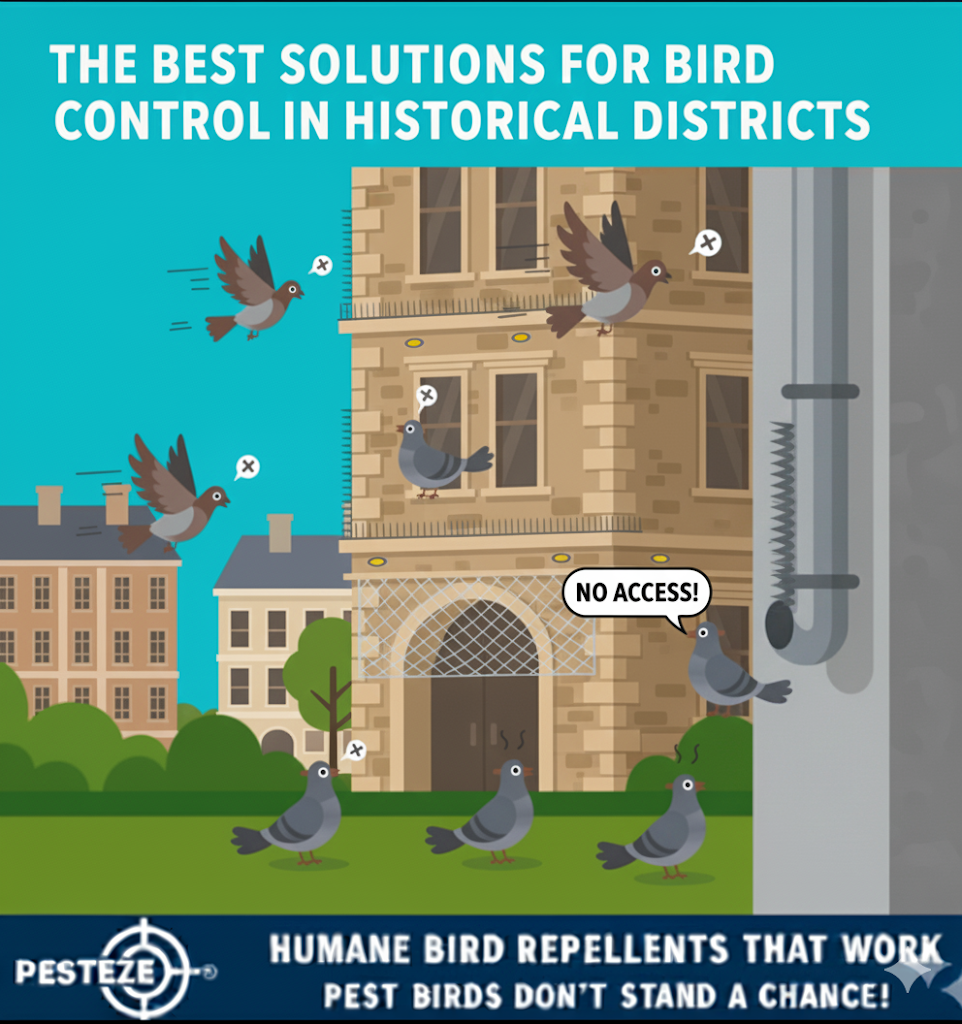THE BEST SOLUTIONS FOR BIRD CONTROL IN HISTORICAL DISTRICTS

THE BEST SOLUTIONS FOR BIRD CONTROL IN HISTORICAL DISTRICTS
SUMMARY
Historical districts often face unique challenges when it comes to bird control, as preservation laws limit structural changes. Humane deterrents such as netting, discreet spikes, and ultrasonic devices provide effective bird management while maintaining architectural integrity.
FEATURES
-
Preservation-Friendly: Protects buildings without altering historic architecture.
-
Discreet Appearance: Blends with structures to maintain aesthetic value.
-
Health & Safety: Reduces damage and disease risks from bird droppings.
-
Durable Materials: Long-lasting solutions withstand outdoor weather.
-
Humane Practices: Keeps birds away without harm.
-
Cost Savings: Prevents costly restoration and cleanup.
-
Versatile Solutions: Suitable for churches, monuments, and historic buildings.
-
Low Maintenance: Provides ongoing protection with minimal upkeep.
GUIDE DESCRIPTION
Birds such as pigeons and starlings are common in historical districts because of the abundance of tall, ornate buildings that offer excellent roosting and nesting opportunities. While these birds may seem harmless, their droppings are acidic and can corrode stone, wood, and metal, accelerating the deterioration of historic landmarks. Nesting materials can also clog gutters and increase fire risks, posing further threats to preservation.
Controlling birds in historical areas requires solutions that respect both heritage and legal preservation guidelines. Netting is one of the most effective methods, as it blocks birds from entering ledges or rooftops while remaining nearly invisible from a distance. Discreet bird spikes and tension wires can be installed along ledges and window sills to prevent roosting without altering the structure. Ultrasonic devices or visual deterrents, such as reflective materials, can further discourage flocks without causing permanent changes.
Regular maintenance and monitoring are key, ensuring deterrents remain effective and buildings stay protected. By combining humane bird control with preservation-conscious strategies, communities can safeguard historical landmarks while maintaining their cultural and architectural value.
- Smrithi Art


Comments 0